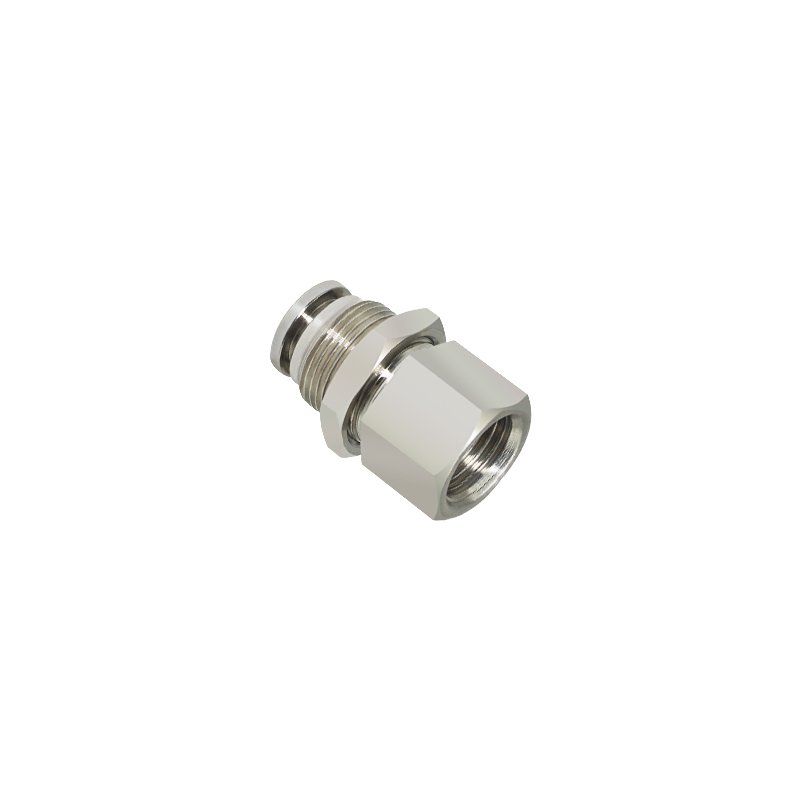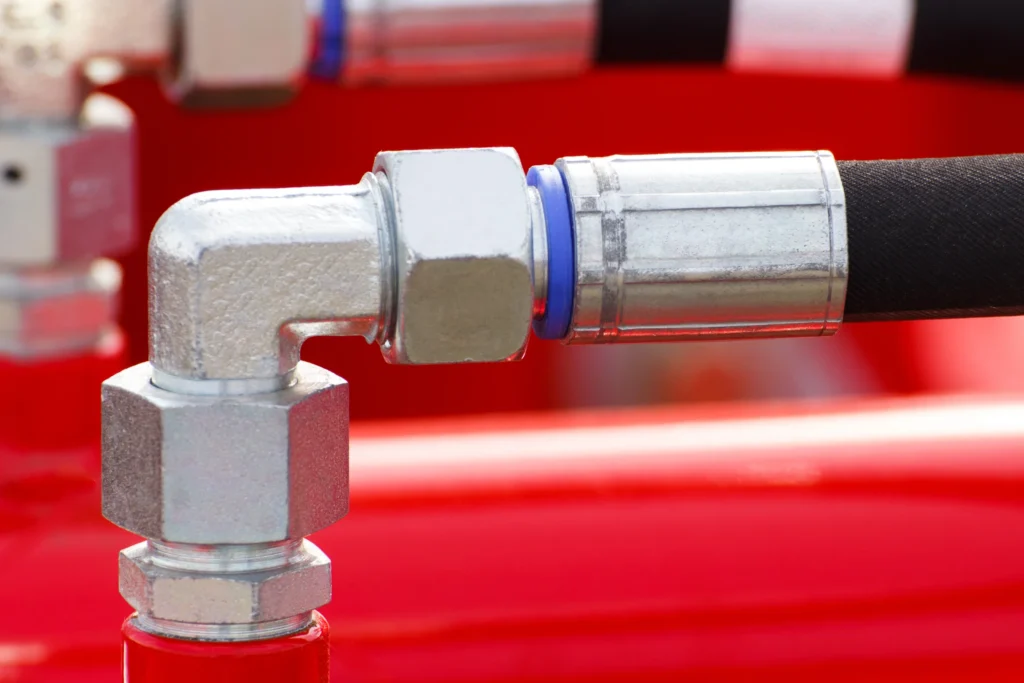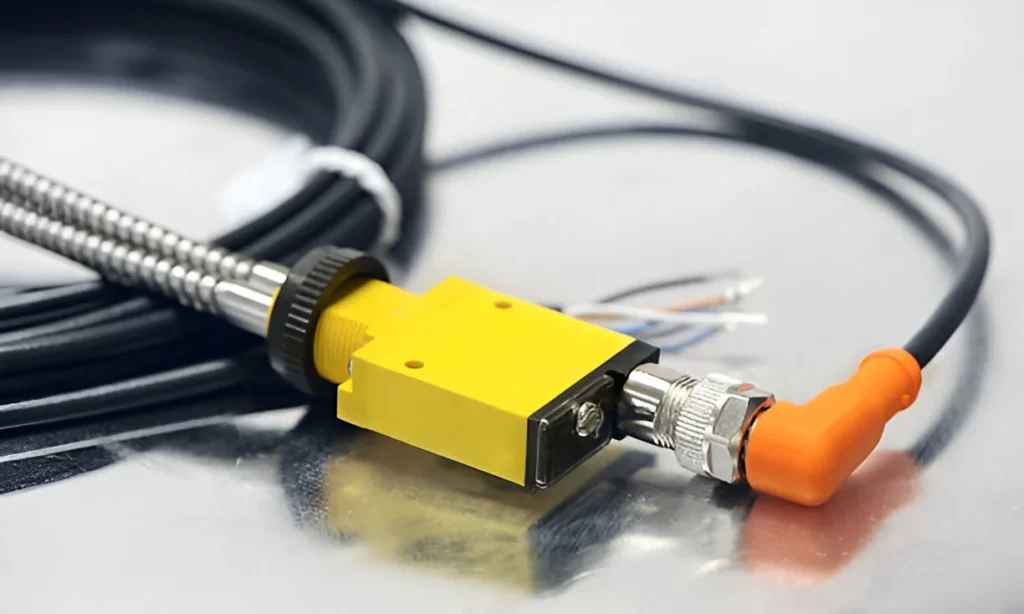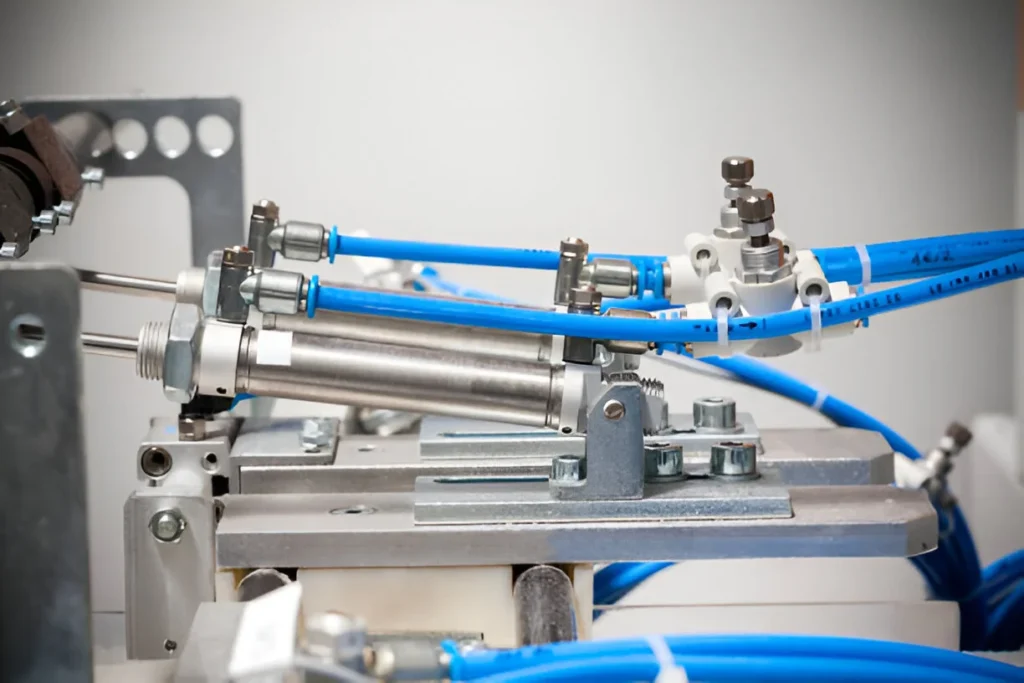Basic principles of copper barb connectors
Copper barb connector is a commonly used pipe connection accessory, mainly used to connect hoses or hoses and hard pipes. Its basic structure consists of a barbed metal sleeve and a fastening ring. When the hose is inserted into one end of the connector, these barbs securely grip the inner wall of the hose, while the tightening ring is used to reinforce the connection and ensure that the hose does not fall out.
The principle of using copper barb connectors is very simple: the design of the barbs makes them easy to enter when inserted, but when trying to remove the hose, the barbs will grip the hose more firmly, in this way providing a stable And reliable sealing effect. In addition, copper has good corrosion resistance and mechanical strength, making this connector particularly suitable for water systems, gas delivery systems, and many other industrial applications.
Important Points and Importance About Copper Barb Connectors
The key points and importance of copper barb connectors are reflected in the following aspects:
- QUICK AND EASY INSTALLATION: The simple design of the copper barb connector makes the installation process quick and easy to operate. Users simply insert the hose into the connector and the barbs automatically grasp the hose without the need for complicated tools or technology.
- Provides reliable sealing: The barb design of the copper barb connector ensures that the connection will not leak easily. This is especially important for liquid or gas delivery systems, where leaks can lead to reduced system efficiency or safety hazards.
- Corrosion resistance: The copper material itself has good corrosion resistance and can be used in a variety of environments, including humid or chemically strong occasions, extending the service life of the connector.
- Economic benefits: Compared to other types of metal connectors, copper barb connectors generally cost less but offer similar or even better performance, making them very popular in applications where cost is controlled while maintaining quality.
- Wide Applicability: Copper barb connectors can be used in many different applications, from domestic water lines to industrial-grade gas and liquid delivery systems, and their flexibility and reliability make them the first choice for many engineering and repair jobs.

Analyze the material and size of copper barb connectors
The performance and suitability of copper barb connectors are highly dependent on the choice of material and size. Here is a detailed analysis of the materials and dimensions of copper barb connectors:
material analysis
- Copper material: Copper is a common material for making barb connectors, mainly because of its excellent corrosion resistance and good electrical conductivity. Copper connectors perform particularly well in environments that are humid or contain corrosive chemicals, resisting rust and extending their service life.
- Alloy material: Some copper barb connectors may be made from copper alloys, such as brass or bronze. These alloys often increase the strength and wear resistance of the connector, making it more suitable for environments with higher pressure or mechanical stress.
Dimensional analysis
- Diameter: The diameter of a copper barb connector is usually determined based on the inner and outer diameter of the hose being connected. Correct size selection is key to ensuring good sealing and joint strength. Common sizes on the market include 1/4 inch, 1/2 inch, 3/4 inch, etc. Users need to choose the appropriate size according to the specific needs of the pipeline.
- Length: The length of the connector also affects mounting and sealing performance. A longer connector can provide a larger contact area, thereby improving its ability to grip the hose, but may also increase material cost and weight.
- Wall Thickness: The wall thickness of a connector determines its ability to withstand pressure. In high-pressure applications, thicker-wall connectors need to be selected to avoid cracking under pressure.
Common types of barb connectors and their differences
There are several common types of barb connectors, each with their own characteristics in design, application, and performance. Understanding these types and their differences is important in selecting the connector best suited for a specific application.
1. Single Barb Connector
- Features: This type of connector usually has only one layer of barbs and is suitable for lower pressure systems. Installation is simple, just push the hose into the connector.
- Applications: Widely used in domestic and light industrial applications such as garden watering systems or low pressure air lines.
2. Double Barb Connector
- Features: Features two layers of barbs, providing stronger grip and sealing than single barbs. Suitable for medium pressure systems.
- Application: Ideal for applications requiring higher sealing and long-lasting connections, such as commercial water systems or gas delivery systems.
3. Rotary Barb Connector
- Features: This connector is designed with a rotatable joint to reduce torque transmission during installation. The barb structure remains the same, but the orientation can be adjusted by rotating the joint.
- Application: Commonly used in systems that require frequent changes in direction or position, such as hydraulic pipelines in mechanical equipment.
4. Push barb connector
- Features: When installed, the hose is pushed into the connector and secured with barbs. Usually designed with a simple push mechanism to make installation faster.
- Application: Suitable for situations where quick installation and disassembly is required, such as in the case of maintenance or frequent replacement of parts.
Summary of differences
- Installation Complexity: From single barb to swivel, installation complexity gradually increases but provides greater flexibility and security.
- Grip and seal: Double barbs provide better grip and seal than single barbs, making them ideal for applications with higher pressures.
- Suitable for: Rotary and push-type barb connectors offer additional features such as easy installation and orientation adjustment, which are useful in certain applications.
How to choose the right copper barb connector
Choosing the right copper barb connector is key to ensuring your system operates safely and efficiently. Here are some criteria and steps for selecting the appropriate copper barb connector:
1. Assess application needs
- Pressure and Temperature: First consider the operating pressure and temperature of the system. Choose connector materials and designs that can withstand these conditions.
- Media type: What type of media the connector will be used to transport (such as water, oil, gas, etc.). Different media may have different requirements for the corrosion resistance and sealing performance of the connector.
2. Determine size and type
- Pipe Size: Choose the size of the connector based on the diameter of the pipe or hose. Make sure the inner and outer diameters match the hose to ensure a good seal and retention.
- Connector type: Select the barb type (single barb, double barb, rotating type, etc.) according to the installation environment and frequency of use. For example, high-pressure systems may require double-barb connectors to provide stronger sealing and pressure resistance.
3. Consider material and corrosion resistance
- Choose copper material: Generally, pure copper or copper alloys (such as brass) have good corrosion resistance and mechanical properties, making them suitable for a variety of environments.
- Environmental factors: If the application environment contains corrosive chemicals or extreme pH values, consider using specially treated copper or adding an anti-corrosion layer.
4. Ease of installation and maintenance
- User-friendly design: Consider the ease of installation and removal of the connector. For example, push-on barb connectors provide quick connection and release.
- Maintenance needs: Consider the convenience and cost of long-term maintenance and choose a model that is easy to clean and replace.
5. Brand and quality certification
- Choose reputable brands: Buying products from reputable manufacturers guarantees quality and performance.
- Certification standards: Check whether the product meets international or domestic safety and quality standards, such as ISO certification.

What is the difference between copper barb connectors and push-in connectors?
Copper barb connectors and push-in connectors are two common pipe connection methods. They have some key differences in design, installation methods and application scenarios:
Design and working principle
- Copper Barb Connector: This type of connector uses a barb design that lines the inside wall of the connector to grip the inserted pipe or hose to prevent it from falling out. When the pipe is pushed into the connector, the barbs embed into the outer surface of the pipe, providing a strong grip.
- Push-in connectors (also known as push-in or quick connectors): A simpler design that usually includes a spring-loaded latch mechanism that automatically locks the pipe in place when it is inserted. To release the pipe, you usually need to press or rotate the snap portion.
Ease of installation
- Copper Barb Connectors: The installation process can be slightly more complicated as you need to ensure that the barbs are gripping the pipe properly. Although no additional tools are required, some strength and skill may be required during removal.
- Push-in connector: Installation and removal are extremely quick and easy, just push or press the buckle. This design is ideal for systems that require frequent replacement or maintenance.
Application scenarios
- Copper Barb Connector: Due to its strong gripping force, it is ideal for use in high-pressure or high-load environments, such as industrial gas transmission, hydraulic systems, etc.
- Push-in connectors: often used in scenarios that require quick assembly and disassembly, such as medical equipment, laboratory equipment, or household products. Also suitable for low voltage applications.
Sealing and durability
- Copper barb connector: Provides better sealing performance and is suitable for occasions requiring long-term stable connection. The copper material also adds corrosion resistance and high temperature resistance.
- Push-in connectors: While quick to install, their sealing properties may be slightly inferior to copper barb connectors, especially in applications subject to higher pressures.
Overall, the choice of connector type depends on the specific application needs, expected frequency of use, and the pressure and temperature conditions of the system. Copper barb connectors are more suitable for those situations where high voltage resistance and long-term stability are required, while push-in connectors are ideal for quick installation and maintenance scenarios.
Can copper barb connectors be reused?
Copper barb connectors can be reused in many situations, but this depends on several key factors, such as the degree of wear on the connector, how it is handled during installation and removal, and the characteristics of the environment in which it is used.
Possibility of reuse
- Corrosion resistance: Copper itself has very good corrosion resistance, which means that copper barb connectors can remain in good condition in a variety of environments, thus facilitating reuse.
- Structural design: The barb design allows the connector to firmly grasp the pipe when installed, but if not handled properly during removal, the barbs may damage the outer surface of the pipe, or the barbs themselves may be bent or damaged, which affects their Performance for use again.
Precautions
- Inspection and Cleaning: Before each reuse, the barbs of copper barb connectors should be inspected to ensure that there are no bent or damaged parts. Also, clean the connector to remove any remaining dirt or deposits that may affect sealing performance.
- Proper Handling: Proper handling procedures should be followed to protect the barbs from damage when removing and reinstalling. Avoid using excessive force to pull on the pipe, which may cause the barbs to deform.
Application restrictions
- Hose Condition: If the connected hose is worn or aged, it is recommended to replace it with a new one to keep the entire system safe and efficient, even though the copper barb connector itself is reusable.
- Safety standards: In some applications that require high safety standards (such as hydraulic systems or gas delivery systems), it may be preferable to use completely new connectors to ensure optimal performance and safety.
Usage environment and application scenarios
Copper barb connectors play an important role in a variety of environments and application scenarios due to their reliability, durability and versatility. The following are some main usage environments and application scenarios:
1. Home and Residential Applications
- Plumbing: Copper barb connectors are commonly used in home plumbing systems to connect hoses for water or drainage.
- Garden irrigation: In garden irrigation systems, copper barb connectors are used to connect irrigation pipes or hoses to facilitate the adjustment and management of water flow.
2. Industrial applications
- Gas and liquid transfer: In industrial production, copper barb connectors are used to transfer a variety of chemicals, fuels or other liquids and gases, especially in environments that require corrosion-resistant materials.
- Hydraulic system: Copper barb connectors are used in hydraulic systems to connect high-pressure pipelines to ensure the sealing and stability of the system.
3. Commercial and service facilities
- Catering Industry: In the catering industry, especially in kitchen equipment, copper barb connectors are used to install and maintain water supply and wastewater treatment systems.
- Medical Equipment: In the medical field, copper barb connectors are used to connect liquid or gas transmission pipelines in medical equipment and are favored for their high reliability.
4. Transportation and Automotive Industry
- Automotive cooling systems: In the automotive industry, copper barb connectors are used in cooling systems to connect coolant lines to ensure durability and sealing in high-temperature environments.
- Marine and Marine: Copper barb connectors are also commonly found in ships’ piping systems for use in saltwater environments, where copper’s corrosion resistance makes them ideal.
5. Extreme environment applications
- Chemical Processing and Mining: In extreme conditions such as chemical processing or mining, copper barb connectors are widely used because of their ability to withstand highly corrosive environments.
- Outdoor Environmental Facilities: In outdoor facilities, such as parks or public construction projects, copper barb connectors are used in long-lasting, weather-resistant installations.
The versatility and durability of copper barb connectors make them ideal for a variety of applications, meeting the high standards required for connectors in different environments.







